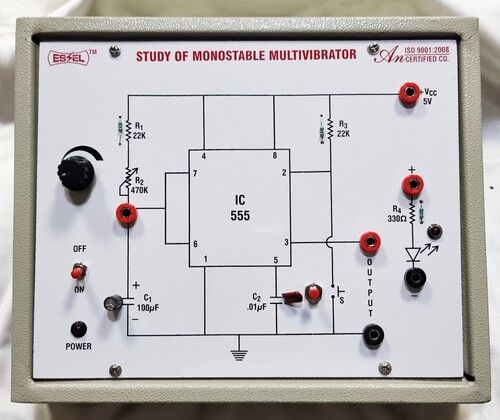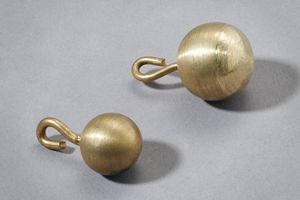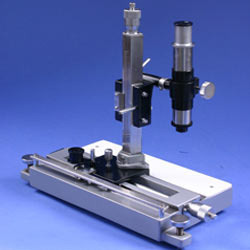Trinocular Microscope
Price 6700 INR/ Piece
Trinocular Microscope Specification
- Equipment Materials
- Iron & Bakelite
- Usage
- For Laboratory
- Capacity
- 1 Kg/hr
- Temperature Range
- 10-40 0C Celsius (oC)
- Display Type
- Analog
- Dimension (L*W*H)
- 14*12*10 Centimeter (cm)
- Weight
- 2200 Kilograms (kg)
Trinocular Microscope Trade Information
- Minimum Order Quantity
- 1 Piece
- FOB Port
- Ambala cantt
- Payment Terms
- Cash in Advance (CID)
- Supply Ability
- 1 Piece Per Week
- Delivery Time
- 1 Days
- Sample Policy
- Sample costs shipping and taxes has to be paid by the buyer
- Packaging Details
- Each Piece
- Main Export Market(s)
- Africa, Asia
- Main Domestic Market
- All India
- Certifications
- ISO 9001..2015/CE
About Trinocular Microscope
Trinocular Microscopes have structural specifications same as inclined and binocular microscopes but provided with a trinocular observation head which combines a binocular observation head and a vertical single tube for photomicrography. Complete with a built-in co-axial mechanical stage. J-3 B : with paired eye-pieces wide field 10 x, huygenian eye-pieces 5 x, 15 x, achromatic objectives 5 x, 10 x, 45 x, 100 x - oil immersion (spring loaded) with periplan eyepieces P-10 x for photomicrography.
Advanced Laboratory Imaging Solution
This trinocular microscope is engineered to deliver clear and detailed images, making it highly suitable for research and academic laboratories. Its analog display offers straightforward usage, enabling quick observation and documentation of samples. The compact dimensions and sturdy materials guarantee both space-saving installation and longevity in demanding environments.
Robust Construction for Reliable Use
Constructed using iron and bakelite, this microscope provides both stability and resistance to wear, making it a dependable addition to any lab. Its design ensures it handles frequent use while maintaining consistent performance. The equipment is easy to maintain, further increasing its operational value.
FAQs of Trinocular Microscope:
Q: How is the Trinocular Microscope with Analog Display used in laboratory settings?
A: This microscope is used for magnifying and analyzing samples in laboratories. The trinocular head allows for simultaneous viewing and image capturing, making it ideal for research documentation and collaborative work.Q: What are the benefits of using this microscope for laboratory research?
A: Its sturdy iron and bakelite construction ensures durability and stable performance. The analog display provides clear imaging, essential for accurate analysis, while the compact size allows efficient utilization of laboratory space.Q: When should I consider using this microscope over other models?
A: Choose this model when you require robust construction, analog viewing, and reliable sample analysis within a 10-40C temperature range. It is optimal for labs prioritizing durability and straightforward operation without advanced digital functions.Q: Where is this microscope manufactured and supplied from?
A: This analog trinocular microscope is manufactured, supplied, and exported from India, catering to laboratory needs on both domestic and international levels.Q: What processes are supported by the microscopes 1 kg/hr capacity?
A: The 1 kg/hr capacity refers to the volume of sample handling the microscope can support, making it suitable for routine laboratory processes that require frequent analysis of multiple specimens.Q: How does the temperature range impact its usage?
A: The microscope operates efficiently within a 10-40C range, ensuring consistent performance and reliability in typical laboratory environments.

Price:
- 50
- 100
- 200
- 250
- 500
- 1000+
More Products in Physics Lab Instruments Category
MONOSTABLE MULTIVIBRATOR USING IC 555
Price 2900 INR / Piece
Minimum Order Quantity : 1 Piece
Dimension (L*W*H) : Approx. 85mm x 55mm x 15mm
Usage : Electronics lab demonstrations, pulse generation, timer applications
Weight : ~30 grams
Equipment Materials : FR4 PCB, electronic grade resistors and capacitors, IC 555 timer, LED, tactile switch, connector pins
Simple Pendulum
Price 210 INR / Piece
Minimum Order Quantity : 1 , , Piece
Dimension (L*W*H) : Approx. 20 cm (base length) x 5 cm (width) x 30 cm (height)
Usage : Educational, School & College Physics Experiments
Weight : Approx. 300 grams (varies with materials and size)
Equipment Materials : Polished wooden stand, metallic bob (brass/steel), nylon thread
Travelling Microsocpe
Price 8200 INR / Piece
Minimum Order Quantity : 1 , , Piece
Dimension (L*W*H) : Approx. 350 x 180 x 340 mm
Usage : Precision Measurement of Small Distances in Laboratory Experiments
Weight : Approx. 35 kg
Equipment Materials : Robust Cast Iron Base, Brass Components, Stainless Steel Scale
Voltmeter (MR-80)
Price 650 INR / Piece
Minimum Order Quantity : 6 Pieces
Dimension (L*W*H) : 5*3.75*3.25 Centimeter (cm)
Usage : For Laboratory
Weight : 150 Grams (g)
Equipment Materials : Iron & Bakelite
 |
ESEL INTERNATIONAL
All Rights Reserved.(Terms of Use) Developed and Managed by Infocom Network Private Limited. |

 Send Inquiry
Send Inquiry




